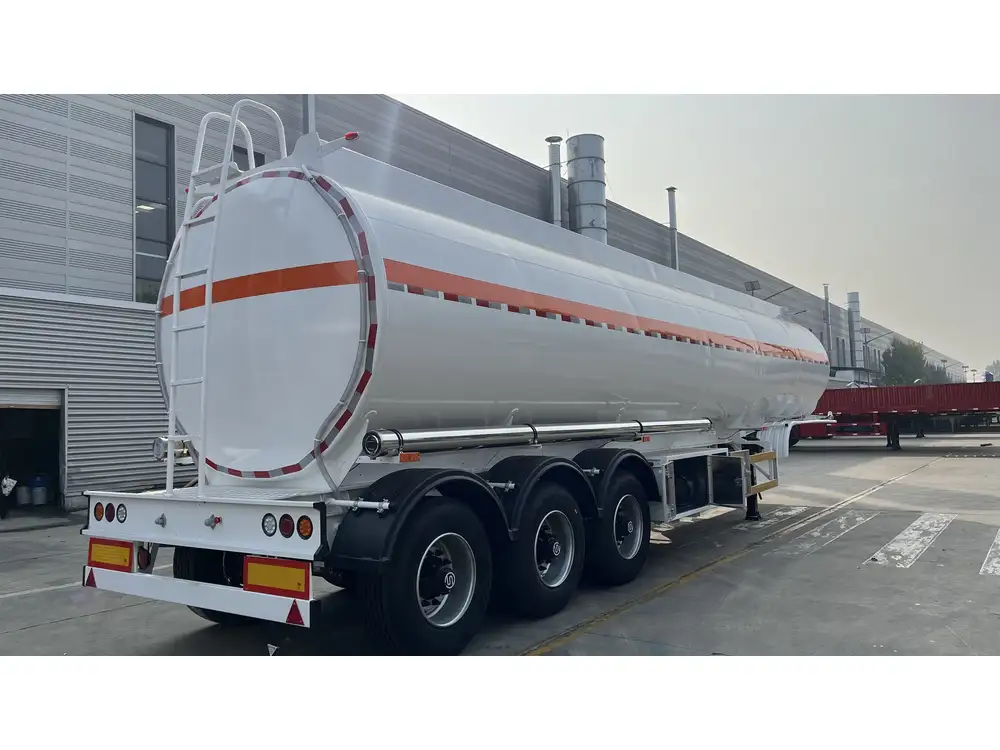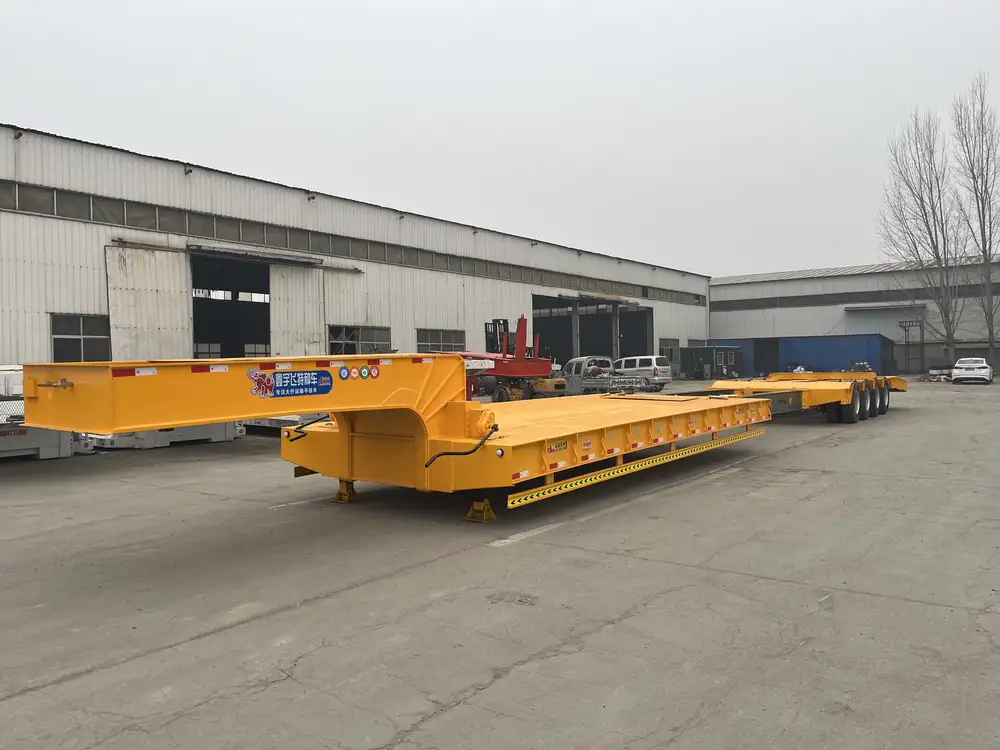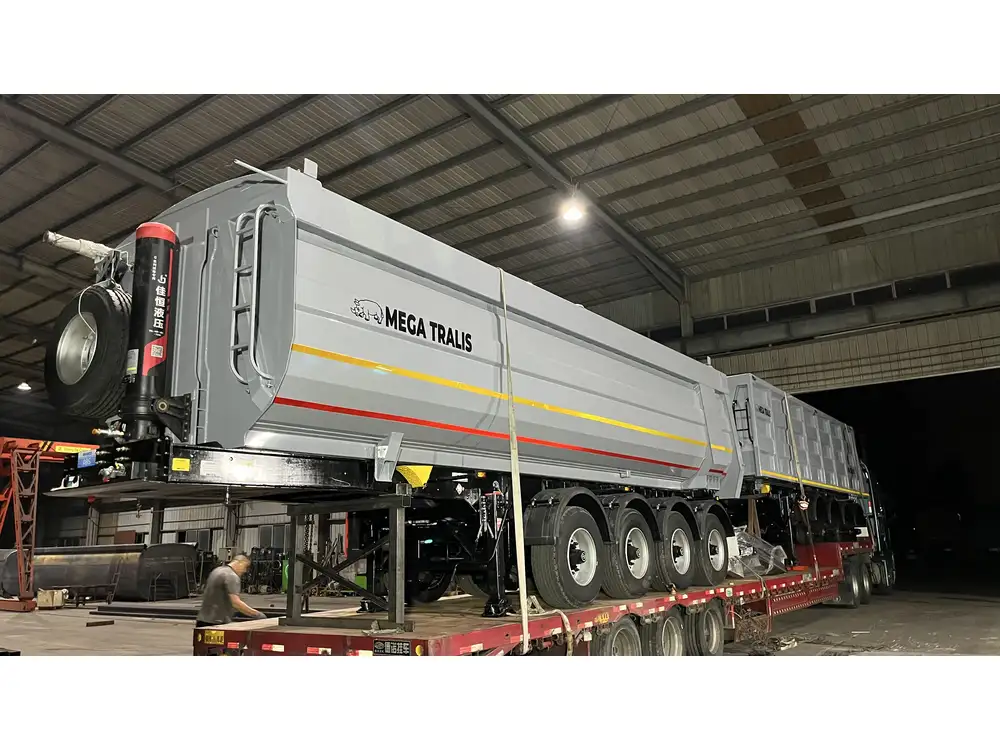When considering the purchase or rental of a 12ft dump trailer, understanding its weight is crucial for both operational efficiency and compliance with transportation regulations. This article delves into every aspect of 12ft dump trailers, including their weight, materials used in construction, factors influencing weight, and considerations for transportation and towing.
Understanding Dump Trailer Specifications
What is a Dump Trailer?
A dump trailer is a specialized vehicle designed for transporting loose materials, including gravel, dirt, sand, and other industrial materials, which can be easily dropped or “dumped” at a designated site. The 12ft variety is popular due to its versatility in various applications, from construction sites to landscaping projects.
| Feature | Specification |
|---|---|
| Length | 12 feet |
| Width | Generally 6-8 feet |
| Height | Varies |
| Capacity | Usually between 5,000-10,000 lbs |
| Axle Configuration | Single or dual axles |
| Dump Mechanism | Hydraulic or gravity |

Weight Categories of Dump Trailers
The weight of a 12ft dump trailer can significantly differ based on multiple factors, including the materials used in its construction, design features, and the load capacity it can handle. Typically, these trailers fall into several weight categories:
- Lightweight Trailers: Approximately 2,000 – 3,000 lbs. Ideal for lighter loads and easier towing.
- Mid-Range Trailers: Approximately 3,000 – 5,000 lbs. Suitable for moderate loads without sacrificing robustness.
- Heavy-Duty Trailers: Approximately 5,000 – 8,000 lbs. Designed for heavier materials and rugged use cases.
Weight Breakdown: Factors Affecting the Weight of a 12ft Dump Trailer
1. Material Composition
The construction material of a dump trailer greatly influences its overall weight. The common materials include:
- Steel: Known for its strength and durability, steel dump trailers tend to be on the heavier side, often weighing between 4,000 and 6,000 lbs.
- Aluminum: A lighter alternative, aluminum trailers generally weigh less, ranging from 2,500 to 4,000 lbs, while offering decent durability.
- Composite Materials: These might incorporate a blend of materials and generally fall somewhere in between, varying widely based on specific construction methods.

2. Design and Features
- Axles: The number and type of axles significantly impact overall weight. Typically, heavier trailers utilize dual axles for better load distribution and stability.
- Dump Mechanism: Hydraulic systems add weight compared to simpler gravity dump designs, which affects the total weight.
- Additional Features: Features such as extra dunnage, reinforced sides, and additional capacity (e.g., dual axles) can also add incremental weight.
3. Load Capacity
Dump trailers are built for various load capacities:
- Standard Capacity: Generally, trailers will have a gross vehicle weight rating (GVWR) that encompasses both the trailer’s weight and the maximum load.
- Payload Variability: A higher payload capacity often corresponds to a heavier trailer due to reinforced structures and materials.
Implications of Weight on Usage and Compliance
Understanding the weight of a 12ft dump trailer has far-reaching implications for both operational efficiency and legal compliance.

1. Towing Requirements
The towing vehicle’s specifications must align with the trailer’s weight:
- Check the towing capacity of your vehicle. Most light-duty trucks can handle a 3,000 lb load, but heavier trailers may require a more robust truck.
- Hitch Rating: Ensure that the trailer hitch complements the weight in question, adhering to safety regulations to prevent accidents.
2. Regulatory Compliance
- Payload Limits: Always adhere to local laws regarding maximum truck and trailer weight limits. Overloading can lead to fines and safety hazards.
- Weight Distribution: Proper loading and weight distribution are crucial not just for compliance, but for enhancing the trailer’s stability and your safety while driving.
3. Impact on Fuel Efficiency
- Greater weight tends to reduce fuel efficiency in towing vehicles. Understanding this concept can aid in budgeting for transportation costs.

Comparison of 12ft Dump Trailers from Different Manufacturers
To provide a clearer understanding, let’s compare various 12ft dump trailers from different manufacturers, highlighting their weight and specifications.
| Manufacturer | Weight (lbs) | Material | Load Capacity (lbs) | Price Range |
|---|---|---|---|---|
| Brand A | 3,500 | Steel | 7,000 | $5,000 – $6,500 |
| Brand B | 2,800 | Aluminum | 5,500 | $4,000 – $5,200 |
| Brand C | 4,200 | Steel | 10,000 | $6,000 – $8,000 |
Conclusion: Making an Informed Decision
Choosing the right 12ft dump trailer requires an informed approach. Understanding the implications of weight on towing, regulatory compliance, and operational efficiency ensures that you select a trailer that meets your needs. Whether you’re considering a lightweight aluminum trailer for easy maneuverability or a robust steel model for heavy loads, weighing all these factors against specific project requirements will enhance your operational capabilities.
Frequently Asked Questions (FAQs)
What is the average weight of a 12ft dump trailer?
- The average weight ranges from 2,500 to 6,000 lbs depending on the construction material and other specifications.
Can I tow a 12ft dump trailer with a standard pickup truck?
- Most light-duty trucks can handle dump trailers weighing up to 3,500 lbs. Always check your vehicle’s towing capacity.
Does the weight of the dump trailer affect its price?
- Generally, heavier trailers, especially those made from steel with higher load capacities, will cost more.
What factors should I consider for transportation?
- Consider the combined weight of the trailer and load, the towing vehicle’s capabilities, and local weight restrictions.
Are there lightweight options for smaller loads?
- Yes, aluminum models provide a lightweight alternative, ideal for smaller loads, enhancing portability without compromising on functionality.
Understanding the intricacies of 12ft dump trailers paves the way to making an informed decision that balances your operational demands, budget, and compliance with safety regulations. Proper selection not only enhances productivity but also ensures safety and efficiency across various projects.



